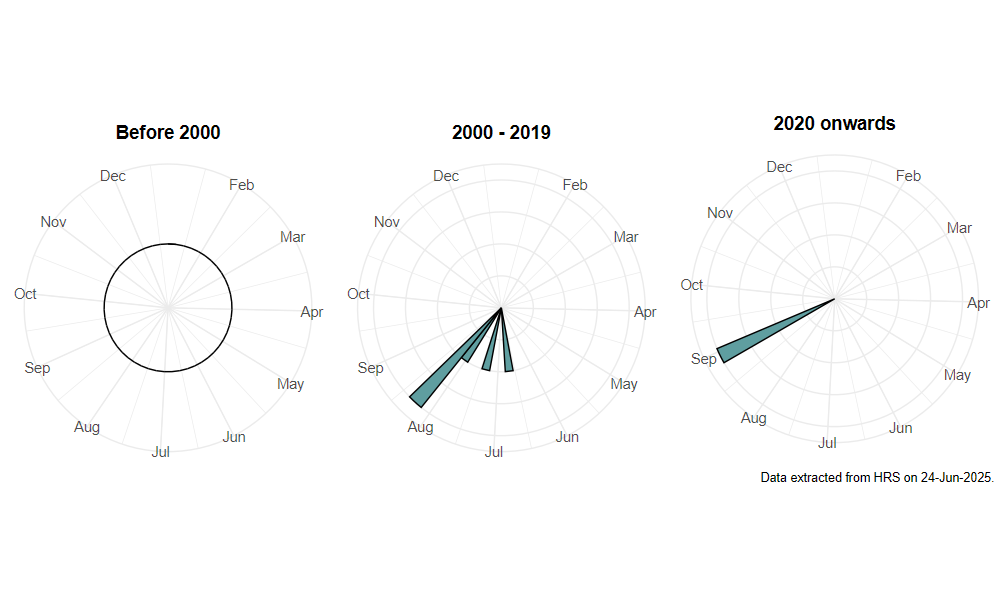Syrphus rectus Osten Sacken, 1875
Identification
Identification difficulty = 4. ![]()
![]() according to Ball & Morris, 20241
according to Ball & Morris, 20241
Synonymy
Specimens were found in Ireland that appear to correspond to the North American Syrphus rectus and it was added to the British list by Speight (1999)2. Males are indistinguishable from S. vitripennis. Females are superficially similar to S. ribesii although the distribution of microtrichia on the wing is like that of S. vitripennis. Whilst there is no reason to doubt that S. rectus is a good American species, there is considerable scepticism about its occurrence in Europe and a feeling this is merely a pale-legged colour form of female S. vitripennis.
Biology
The handful of European records give no indication of any specific habitat.
Flight period
The following plots show the number of unique records per week excluding those reported to be of immature stages.

Distribution
S. rectus is recorded widely in North America. In Great Britain, a single female with almost completely tellow hind tibia, but with the microtrichial pattern of S. vitripennis on the wings was reared by Colin Plant from Bishops Stortford in June 1987 (Plant, 1991)3 and there have subsequently been a few, similar females found in widely scattered localities.

-
Ball, S., & Morris, R. (2024). Hoverflies of Britain and Ireland. WILDGuides (3rd ed.). Oxford: Princeton University Press. ↩
-
Speight, M. (1999). Syrphus rectus Osten Sacken and its potential implications to the recording of Syrphus species. Dipterists Digest (Second Series), 6, 85–91. ↩
-
Plant, C. (1991). Exhibit at BENHS indoor meeting, 13 June 1990. British Journal of Entomology and Natural History, 4, 48. ↩